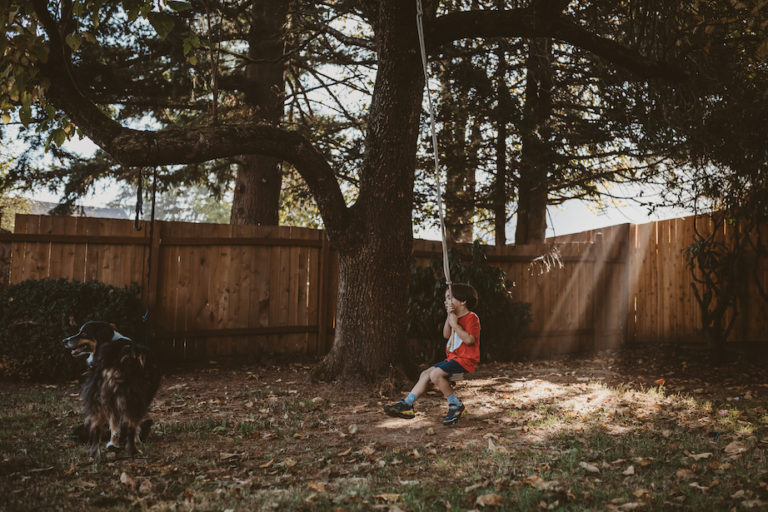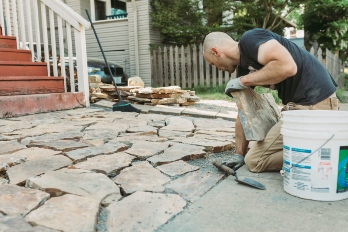Trees are wonderful in and of themselves, of course. But there’s a bonus: property values of landscaped homes are 5 to 20 percent higher than for those that aren’t, based on the trees, according to the International Society of Arboriculture (ISA). Indeed, the value of trees is officially recognized by insurance companies, the courts, and even the IRS.
So which of the hundreds of species do you choose? To help you start planning, below are some top picks for beauty and fast yet healthy growth, as well as the top 20 trees to avoid and why.
10 great tree species for most yards
1. Dogwood: There’s a reason it’s one of the most popular flowering trees in the country
2. Tulip tree: Shade and blooms, fast-growing yet hardy
3. Saucer magnolia: A pink-blooming showstopper
4. Sugar maple: An American favorite for beautiful fall color
5. Silver maple: Lots of shade fast, but plan for the vast root system
6. Arborvitae: Great in multiples as a screen or singly as sculpture
7. Weeping cherry: Romantic, elegant bloomer that’s not too big
8. Red oak: Quickly offers shade and fall color in large backyards
9. American holly: Provides privacy, winter color, and food for birds
10. Eastern redbud: Stunning spring color, lovely branch pattern in winter
We borrowed this list from BobVila.com. Visit there for details and pictures.
11 fast-growing yet hardy trees
It’s hard to wait decades for shade or a full complement of blooms. Yet fast-growing (in tree terms) species often have weak, brittle wood that’s vulnerable to pests and strong winds. Here are some that avoid the pitfalls.
In 10 years, a 6-foot sapling of these trees will reach …
1. Japanese cedar: 16 to 20 feet
2. Tulip poplar: 25 feet
3. Black gum: 16 to 20 feet
4. Amur maple: 15 to 20 feet
5. Japanese zelkova: 25 feet
6. Chinese pistache: 16 to 20 feet
7. Bald cypress: 16 to 22 feet
8. Littleleaf linden: 18 to 22 feet
9. Redbud: 16 to 20 feet
10. Japanese pagoda: 16 to 20 feet
11. Rotundiloba sweetgum: 20 to 25 feet
We borrowed this list from the experts at Fine Gardening. Visit there for details and photos.
Think twice before choosing these trees
Most of the trees that arborists and landscapers label “problem” trees suffer from one or more of these characteristics:
- Out-of-control or unstable root systems
- Messy or stinky
- Prone to losing branches or toppling in storms
- Pest-prone and probably short-lived
Gigantism can also be a problem if you haven’t planned for it. A growing consideration is solar exposure. With solar panels going up fast in many parts of the country, think about whether your tree will someday shade your, or your neighbor’s, roof. And not just south-facing roofs: as prices come down, it’s becoming worthwhile to install solar on east- and west-facing roofs as well.
Below you’ll find a list of trees to ban from your yard — or at least think twice about. There are no bad trees, per se. Yet any number of species, some of them quite popular, are not a good fit for the typical suburban or urban yard and life. Key word: typical. Some of these trees might be great in the right spot on your particular property.
20 trees to avoid
1. American sweetgum: A nice big shade tree … with surface roots that crack sidewalks and a plethora of hard, spiny seed pods that injure feet and paws and can shoot out of the lawnmower like some kind of medieval weapon.
2. Ash: Beautiful and strong, its wood is used for professional baseball bats. But a tiny beetle called the emerald ash borer is bent on wiping out the species. If you plant one, don’t get attached to it.
3. Birch: Many varieties are vulnerable to the bronze birch borer and have shallow, unstable root systems. If you can’t resist (understandably), research the varieties and try to keep them away from the house.
4. Black walnut: Edible nuts are a great thing, but you also have to pick them all up each fall. But the bigger problem is the growth-inhibiting toxins it secretes, often killing nearby trees, vegetables, and other plants.
5. Bradford pear: Lovely spring blossoms … that kinda stink. Another fast-grower prone to splitting and cracking. The entire tree has been known to split in half in severe weather.
6. Cottonwood: Pretty and low-maintenance. But the somewhat brittle wood is easily damaged by insects and disease, and the soft, shallow root system tends to rot, making the tree unstable in storms.
7. Eucalyptus: This Australian import grows incredibly fast and smells wonderful. But it tends to drop large branches without notice, and as it sheds its bark seasonally, you might be doing a lot of cleanup.
8. Gingko: Gorgeous fan-shaped leaves, yes. But the fruit of the female tree reeks (it’s often compared to vomit) and is hard to rake up. Stick to a male-only variety like Autumn Gold or Lakeview.
9. Leyland cypress: This fast-growing evergreen is popular for privacy screens. However, it needs lots of trimming and maintenance. The dry, twiggy interior can be a fire hazard — officials in some areas discourage planting them.
10. Lombardy poplar: Distinctive and fast-growing (up to 6 feet a year) but prone to getting ravaged several diseases and bugs. The running roots are invasive and hard to get rid of.
11. Mimosa: This lovely native to Iran and China is susceptible to wilt and web worm. Its weak wood is easily damaged in storms, and its bounty of pods is a clean-up issue.
12. Mountain cedar: During the cooler months, this bushy tree lets loose massive amounts of pollen. Even if you don’t have allergies, your neighbors might.
13. Mulberry: Mulberry jam, mulberry pie, mulberry sorbet … Mmmm. Large, shallow roots, lots of pollen, shade so dense that grass won’t grow underneath, staining fruit mess that seeds more trees where you don’t want them.
14. Norway maple: Its dense shade can be nice. But between that and a shallow, nutrient-hungry root system, it tends to kill nearby plants. Increasingly considered invasive around the country.
15. Pin oak: A commonly planted tree, but be sure your site is right. It’s gigantic and needs wet, acidic soil.
16. Quaking aspen: The shimmery beauty is the mint of the tree world: its root system continually sends up suckers that want to be new trees. If you don’t want more, it’s a constant battle. This tree is also short-lived compared to other hardwoods.
17. Silver maple: This popular tree is easy to establish, fast-growing, and big, offering tons of shade. But like many fast growers, it tends to be weak, a potential hazard in bad storms. Plus, the shallow root system invades sewage pipes and cracks pavement.
18. Sycamore: Magnificent, huge tree, but prey to sycamore anthracnose and several other afflictions. Plus, the leaves, twigs, bark and fruiting balls can be a bit of a mess.
19. White pine: Valued for timber and sometimes harvested for Christmas, it’s a sensitive tree prone to weather damage and known for attracting pests.
20. Willow: Another beauty with a flip side. Aggressive, water-hungry roots wreak havoc with sewer lines. Weak and prone to cracking, the tree is relatively short-lived too.
When and how to plant
The best time to plant is the dormant season, either early spring before budbreak or fall after the leaves drop. (You can often get good deals on trees and other plants in the fall.) But if buds are already opening where you live and you’re itching to plant, don’t worry: healthy trees can be planted throughout the growing season if given the right care.
It’s a big misconception that if you know how to dig a hole, you know how to plant a tree. There’s much more to it, and proper planting is key to your tree’s immediate and long-term health. So consider hiring the nursery, or a landscaper or arborist, to do it. Many nurseries bundle planting in with delivery, so you don’t even have to borrow your friend’s truck to get it home! If you DIY, be sure to do your homework first. (Don’t miss “Beware the Mulch Volcano.”)
Be sure to check out these great sites for useful information on choosing, planting, and caring for trees on your property:
Happy planting!




